Cemeteries- A Bridge between Life and Death
By: Orit Ramon
Cemeteries are the places to which people all over the world lead their dead relatives and loved ones to their final rest. As such, they are the place where the living and the dead meet, but also a meeting place for spiritual, aesthetic, and social ideas. This multi-dimensional encounter is not only influenced by the living visitors, but also itself influences and shapes the visitor’s world.
In his article on Jewish cemeteries, Avriel Bar Levav suggests a typology of eight models that could better explain the role cemeteries play. This typology can be applied to any cemetery:
- The cemetery as a neighborhood – the residence for those living in the margins of society, arranged in many ways as a reflection of their status while they were alive. The dead neighborhood continues the social relationships of the living neighborhood, reflects them, and is an integral part of that neighborhood as well.
- The cemetery as a gate or passage between the world of the living and the world of the dead. For that reason, it can also be dangerous – on the one hand, the dead can pull the living towards them, and on the other, the dead can enter the world of the living.
- Since the cemetery functions as a gate, it can also be a communication center between the worlds – a place where you can receive information from the world beyond, and also send your requests to the heavens. People visit cemeteries to share their troubles and ask the dead for help. Communication in a cemetery also takes place between the living, in the form of eulogies or tomb inscriptions and decorations.
- The cemetery as a stage – the cemetery is where funerals take place, but also where other public and personal ceremonies are held. Through these ceremonies, to which the cemetery serves as a stage, social frameworks and conventions are understood and affirmed.
- The perception of the cemetery as a stage turns its aesthetic to a setting or backdrop, which reflects visitors’ position in relation to death and the dead.
- Because of the cemetery’s marginality it can be, and has been, used as a refuge, where both people and property can be hidden.
- In other cases, the cemetery can be viewed as a trap – those buried in them can no longer leave. Both the perception of the cemeteries as a refuge and as a trap reflect the nature of cemeteries as an “other place” – different and distinct from our own.
- Perhaps more than anything, a cemetery is a place of remembrance, a center for the formation of “memory communities”, and a center of identity. As communities shrink or as people move away, cemeteries can become even more central as a focal point of identity, for the dead as well as for the living.
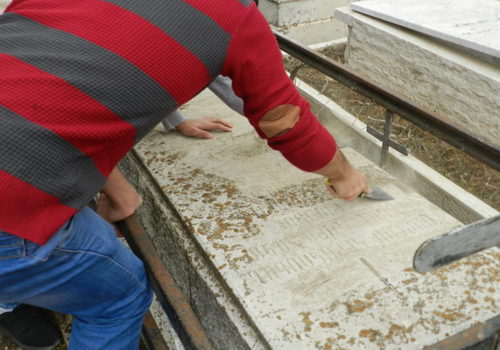
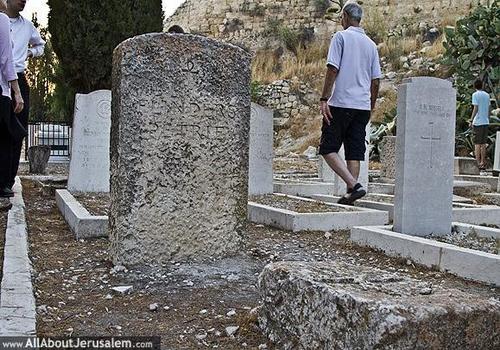
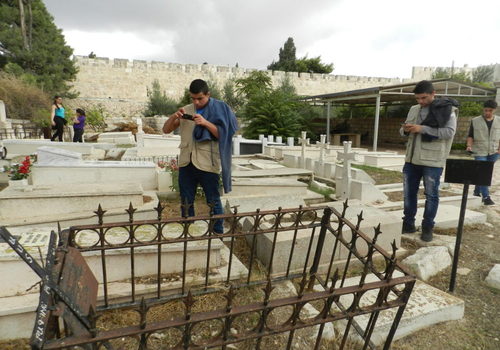
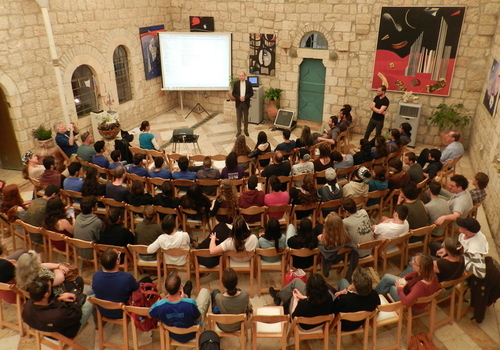
In his article, Bar-Levav claims “the internet is a paradise for cemeteries”. Indeed, uploading data from the Mount Zion cemeteries seeks to bring the buried, the living, the communities and the memory to eternal life in a virtual paradise. It was done in hope of allowing for a renewed encounter between the grave sites, the virtual communities and the living communities, and raising interest in exploring the relations between them.
The documentation project for the Mount Zion cemeteries is the initiative of Yiska Harani and Dr. Orit Ramon, with support from the Embassy of Germany in Israel and Provost Wolfgang Schmidt. This project could not have happened without help provided by MyHeritgae Israel, the international BillionGraves database, and the many dozens of volunteers who toll part in reviving the Mount Zion cemeteries.
- Students and teacher of the Armenian School of Jerusalem
- Itzik Reiter
- Nir Ortal, Yad Yizhak Ben-Zvi
- The Jerusalem Pre-Military Leadership program (HaMechina HaYerushalmit)
- Nirit Shalev-Kalifa
- Nathan Landau – coordinator of the documentation project
- Dajani family
- The Jerusalem Intercultural Center
- Cecilia Blum, the Lutheran Church
- The German Ministry of Foreign Affairs
- Paul Wright, the Anglican school
- Katja Zonken , photography
- David Liebermann and Lavie Zamir, MyHeritage
- Al-Hayat Club, Jerusalem
- The Franciscan Church
- Arik Pelzig, Harp of David Gallery
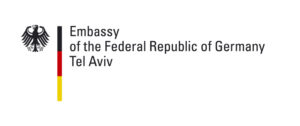
The Project was supported by the German Embassy in Tel Aviv
for more information about current events at Mt Zion visit www.mountzion.org.il





